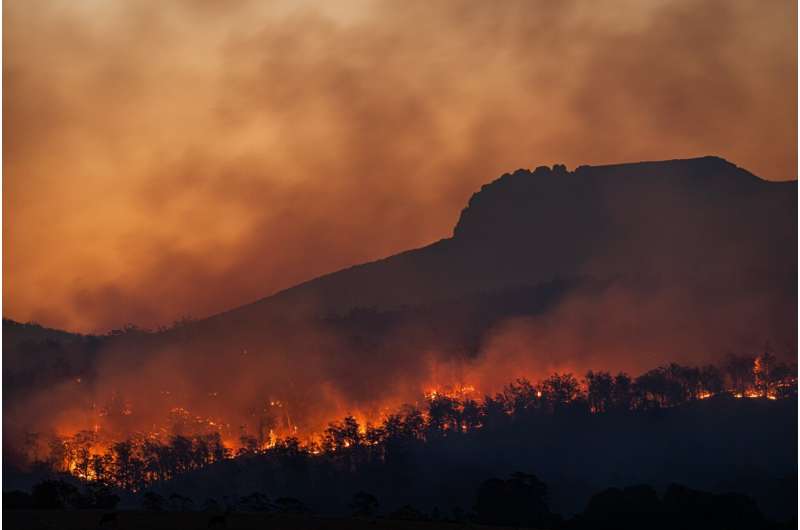Simultaneous climate events risk damaging entire socioeconomic systems

The cascading effects of extreme weather—such as recent heatwaves which combine heat and drought—and the interconnectedness of critical services and sectors has the potential to destabilize entire socioeconomic systems, according to a study published in PLOS Climate by Laura Niggli at University of Zurich, Switzerland and colleagues.
Over the past several decades, the frequency and magnitude of concurrent climate extremes, such as heat and drought events, have increased. These events can affect many different assets, sectors and systems of the human environment, including human security, health, and well-being, although many risk assessments and resilience plans only consider individual events.
To better understand how extreme weather might affect interlinked socioeconomic systems, the authors of the present study conducted a qualitative network-type analysis, first reviewing studies of eight historical concurrent heat and drought extreme events in Europe, Africa and Australia. Next, they compiled examples of interlinked impacts on several critical services and sectors, including human health, transport, agriculture and food production, and energy. For example, drought events reduced river navigation options, limiting the transport of critical goods. Rail transport was simultaneously stymied when prolonged heat buckled the tracks. Using these analyses, researchers created visualizations of the interconnected effects of concurrent heat and drought events on those services and sectors.
The researchers found the most important cascading processes and interlinkages centered around the health, energy and agriculture and food production sectors. In some instances, response measures for one sector had negative effects on other sectors. Future research should focus on response measures in interconnected systems to improve the resilience to compound heat and drought events.
According to the authors, "We identified an interconnected web of sectors that interact and cause additional losses and damages in several other sectors. This multilevel interconnectedness makes the risks of compound extreme events so complex and critical. More efforts should be concentrated on the analysis of such cascading risks and on strategies to interrupt such chains of impacts, rather than compartmentalizing risk assessment into single extreme events, impacts and sectors".
Laura Niggli adds: "This study presents unprecedented quantitative information and qualitative understanding on the impacts of combined heat and drought events in major world regions over the past 20 years. It contributes new insights how these impacts cascade through critical systems (health, energy, food production, etc.) and emphasizes the importance to appropriately consider such impact cascades in adaptation efforts."
More information: Towards improved understanding of cascading and interconnected risks from concurrent weather extremes: Analysis of historical heat and drought extreme events, PLOS Climate (2022). DOI: 10.1371/journal.pclm.0000057
Journal information: PLOS Climate
Provided by Public Library of Science





















